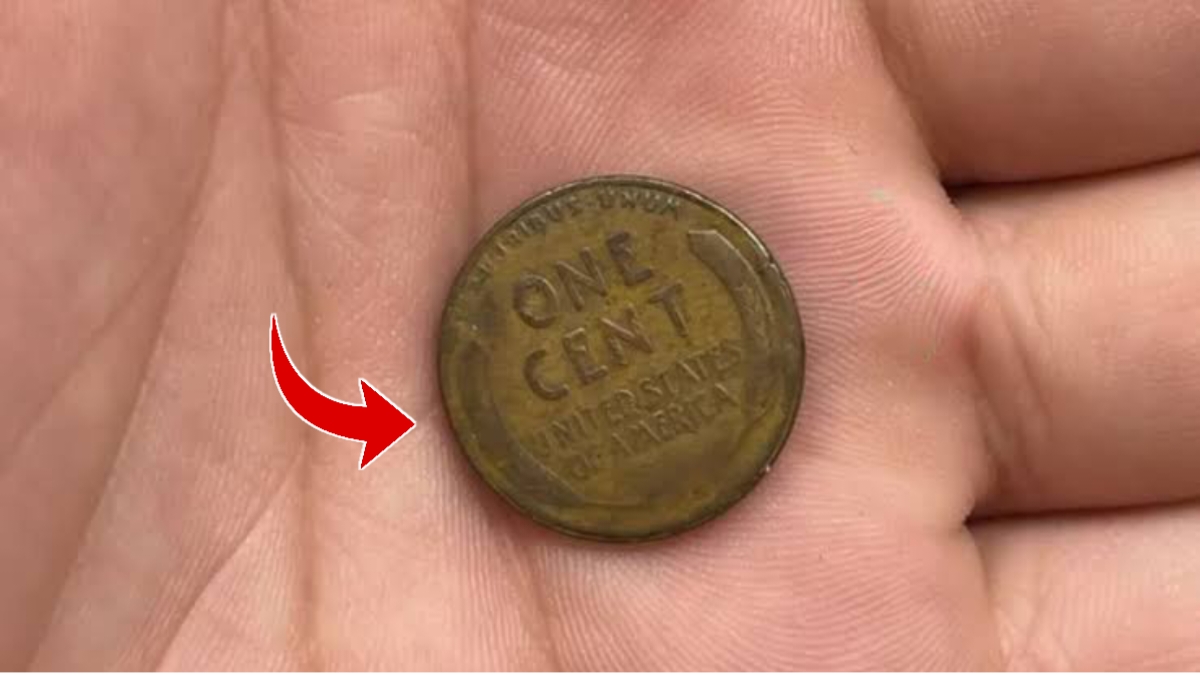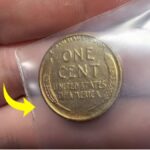For most Americans, a penny is just a forgotten coin at the bottom of a drawer or rolling around in the car’s cupholder. Yet a rare version of the Lincoln Wheat Penny has stunned collectors and investors by reaching an estimated value of $530,000. What makes this tiny coin so valuable is not just its age or design, but the incredible rarity of a specific minting mistake and its preservation over time. Even more astonishing is the belief that one or more of these coins may still be in circulation today, tucked away in an old box or quietly passed from one hand to another in everyday transactions. As more people become aware of this treasure, the excitement and curiosity only continue to grow. Could a simple glance at your spare change reveal a half-million-dollar surprise waiting to be discovered?
A Rare Coin Born From a Minting Flaw
The Lincoln Wheat Penny series began in 1909 to honor the 100th anniversary of Abraham Lincoln’s birth and continued until 1958. Throughout its nearly five-decade run, the design saw several variations and errors, some of which are now worth large sums. The penny in question is believed to be a 1943 copper coin—a product of one of the most famous minting mistakes in U.S. history. During World War II, the U.S. Mint produced pennies using steel instead of copper to preserve metal for the war effort. However, a few copper blanks from 1942 accidentally made their way into the presses, resulting in a handful of 1943 copper pennies. These error coins were produced in such limited numbers that only a few confirmed specimens are known to exist. Their survival in excellent condition adds to their immense value, and every collector dreams of finding another hiding in plain sight.
Why This Particular Penny Is So Valuable
While many coins can be old, very few meet the criteria that make the Lincoln Wheat Penny valued at $530K so special. In numismatics, value comes from a combination of rarity, demand, condition, and historical context. This penny’s worth skyrockets primarily due to its extreme scarcity—there are believed to be fewer than 20 known authentic examples of the 1943 copper penny. On top of that, coins in near-perfect condition are incredibly rare, making each surviving example a major find. The high valuation also reflects recent auction results, with verified specimens fetching hundreds of thousands of dollars. What makes this coin stand out isn’t just the error itself, but its symbolism as a physical trace of wartime America. It tells a story of material shortages, government adaptations, and human oversight—all captured in a piece of copper the size of a thumbnail. For collectors, it’s more than a coin; it’s a moment in time.
How to Tell If Your Penny Could Be Worth a Fortune
Though it may sound like a long shot, checking your spare change for rare coins is not as far-fetched as it seems. If you come across a Lincoln Wheat Penny dated 1943, you’ll want to pay very close attention. Most 1943 pennies are made of steel and have a silver-gray color. A genuine copper version from that year will appear brown or reddish and will not stick to a magnet. Weighing the coin can also help: a steel penny weighs about 2.7 grams, while a copper penny weighs 3.1 grams. If you find something suspicious, avoid cleaning or scratching the coin—it can severely reduce its value. Instead, consult a professional numismatist or send it to a grading service like PCGS or NGC. Even if it turns out not to be worth half a million dollars, learning more about the coins in your pocket could lead to surprising discoveries.
Other Wheat Pennies Also Command High Value
The 1943 copper penny might be the star of the show, but it’s not the only Lincoln Wheat Penny that could be worth a small fortune. Several coins in the series are highly prized by collectors. For instance, the 1909-S VDB penny is rare due to its limited production and controversy over the designer’s initials. The 1914-D penny from the Denver Mint is also scarce, especially in uncirculated condition. The 1922 “No D” penny is unique because of a die error that left off the mint mark, making it a collector’s dream. One of the most famous errors is the 1955 Doubled Die penny, where the date and lettering appear doubled. Each of these coins can be worth thousands depending on condition. So even if the $530K penny doesn’t show up in your pocket, others hiding in your coin jar could still be surprisingly valuable.
Coin Collecting Is Booming Across the U.S.
What was once considered a niche hobby has transformed into a fast-growing passion shared by millions. Coin collecting has exploded in popularity in recent years, fueled by viral videos, online auctions, and stories of average people discovering rare coins worth life-changing amounts. Many Americans have become more curious about the coins they once ignored, often finding pieces passed down from grandparents or forgotten in old jars. The appeal is twofold: the historical aspect of the coins and the financial opportunity they represent. Coin shows, YouTube tutorials, and appraisals at local antique shops have made the process of identifying and valuing coins more accessible than ever. The Lincoln Wheat Penny valued at $530,000 has added fuel to the fire, proving that ordinary objects can sometimes hide extraordinary value. Whether for fun, history, or investment, coin collecting is back in the spotlight—and growing stronger with every discovery.
Disclaimer
This article is intended for informational purposes only and should not be taken as financial or investment advice. The estimated value of $530,000 for the Lincoln Wheat Penny is based on publicly reported auction results, expert commentary, and market trends as of the time of writing. Although rare coins have occasionally been found in circulation, the chances of discovering a 1943 copper penny or any high-value error coin in everyday change are extremely low. Readers interested in coin collecting should consult certified numismatists and use professional grading services like PCGS or NGC for accurate authentication and evaluation. Always avoid altering or cleaning coins, as such actions can significantly decrease their worth. While coin collecting can be rewarding and historically enriching, it also requires caution, research, and expert guidance. No guarantees are made regarding a coin’s value, resale potential, or likelihood of discovery.



